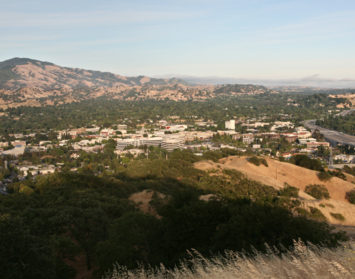By Kevin Beaumonte
As buildings continue to sell for all-time high pricing, rents proceed to follow the trend. At this point in the market’s cycle, most institutional grade buildings have sold. While a building selling is typically a catalyst for increased rent and operating costs, it must be met with increased space demand to maintain year-over-year growth. 2016 was the East Bay’s lowest vacancy percentage in the past 10 years, but since then, there has been a slight increase collectively across the region. The question remains—will rents begin to soften, and when?
Oakland/I-880 Corridor
There are no signs of a slowdown in demand from tech companies for large blocks of space, most of which are either expansions of already existing tenants or more spillover from San Francisco. While tech companies have seen Oakland as an expansion opportunity, industries such as nonprofits and other administrative uses have felt the pressure of increasing rents and look elsewhere for relief.
The vacancy rate for the Oakland office market sits at 10.8%, up from 8.2% in 2016. This represents over 700,000 more square feet of space available today than in 2016. There are five buildings in Downtown Oakland alone that can accommodate a 100,000 or greater square foot tenant. That said, if there is continued demand from larger users, this vacancy rate may decrease slightly throughout 2020.
Like Downtown Oakland, the R&D/Flex markets along the 880 Corridor have acted as a relief valve for companies located in more expensive markets, most of which are coming from the peninsula area. Examples of this include the historic expansion by Facebook to Fremont’s Ardenwood area and companies like Allogene Therapeutics and Orchard Therapeutics expanding from South San Francisco and Menlo Park, respectively. Because of this migration, some areas of the East Bay with easy access to the peninsula have seen rents grow more than 30% over the past two years. The 880 Corridor’s R&D/Flex market has been one of the steadiest in the East Bay with single digit vacancy rates dating back to 2014.
I-680 Corridor
The northern end of the 680 Corridor, including primarily Walnut Creek, Pleasant Hill and Concord, began to see some interest from the aforementioned industries located Oakland this quarter. While some companies have expanded into the market and this becomes something to monitor continuously, most recently the N-680 market saw another increase in vacancy due to corporate downsizings from companies like Liberty Mutual and ASI who collectively reduced their square footage by 29,593 RSF. Although vacancy is at 15% and marks the highest percentage in the market in the past five years, rents have increased at an average of 28% during the same time frame.
The spillover from San Francisco and Oakland hasn’t happened as frequently as some would have thought, however, there has recently been demand on this front. First Republic Bank is relocating some of their San Francisco employees to Walnut Creek with the lease signing of 22,916 RSF at Growers Square. They have an existing presence downtown Walnut Creek, and this expansion location will only help further accommodate shorter commutes for their East Bay employee base. The location also boasts great access to both the downtown retail core and Walnut Creek BART. Richard Avaler, an Oakland based architectural firm, signed a lease for 13,614 RSF downtown Walnut Creek. BART access was also important to this group. As mentioned, we believe there will be continued interest from these types of companies. Whether it makes an impact on the market remains to be seen.
The Tri-Valley’s recent activity is highlighted by the technology industry, most notably with an expansion by SAP in Bishop ranch. SAP acquired Dublin based Callidus Cloud and in turn put their space in Dublin on the market for sublease. Immediately following this decision, they expanded their existing 150,000 RSF in Bishop Ranch by signing a lease for an additional 56,488 RSF. This is to presumably relocate employees from Dublin to San Ramon. Silicon Valley headquartered company, 8×8, is another example of the Tri-Valley’s growing tech presence. They recently signed a lease in San Ramon for 12,118 RSF as their first step into the East Bay.
Another industry having an impact in the Tri-Valley is the biotech sector. By way of example, during the fourth quarter, Inscripta expanded from approximately 5,000 RSF to 29,467 RSF in Pleasanton. They are one of many biotech companies who have significantly increased their footprint of late. The R&D/Flex market in the Tri-Valley has experienced the most tenant demand and seen the highest rent growth in the region over the past five years. For perspective, its vacancy rate is currently 11% compared to Class A office which is 14.5%.
Kevin Beaumonte is a vice president at Hughes Marino, a global corporate real estate advisory firm that exclusively represents tenants and buyers. Contact Kevin at 1-844-662-6635 or kevin.beaumonte@hughesmarino.com to learn more.










